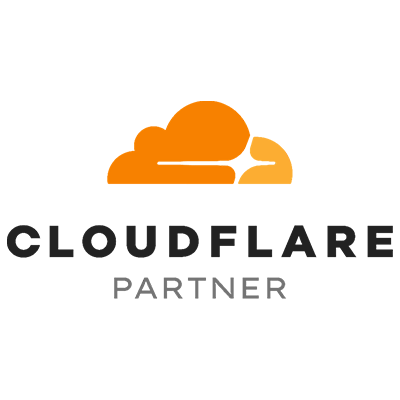Implementing Microsoft Power Platform and Azure Cloud Solutions in a Leading Thermal Insulation Sheet Manufacturing Company
A prominent player in the thermal insulation sheet industry, known for its innovative products and commitment to quality. With a large-scale production facility and a diverse customer base, the company faced challenges in managing operations, tracking performance metrics, automating routine tasks, and ensuring data accessibility and security.
Client Background
Founded in 2007, a leading Thermal Insulation Material Manufacturer revolutionized thermal insulation with innovative sheeting solutions. With a strong R&D focus, they expanded their product line, catering to diverse industries. As they grew, manual processes hindered efficiency. Embracing digital transformation, they partnered with us to implement Microsoft Power Platform and Azure Cloud Solutions, further solidifying their industry leadership.
Challenges
Being best insulation sheet supplier, they identified several key challenges that needed addressing:
-
Inefficient Operations
Manual processes were prevalent in production scheduling, inventory management, and quality control, leading to inefficiencies and errors.
-
Data Silos
Data was scattered across various systems, making it difficult to access, analyze, and make data-driven decisions.
-
Lack of Automation
Routine tasks, such as reporting and data entry, were time-consuming and prone to human error.
-
Limited Insights
The management team lacked real-time insights into key performance indicators (KPIs) and overall operational performance.
-
Scalability and Security
The existing IT infrastructure lacked scalability and advanced security features necessary to support the company’s growth and data protection needs.
Objectives
The primary objectives of implementing the Microsoft Power Platform and Azure Cloud Solutions were to:
-
Streamline Operations
Automate and optimize production scheduling, inventory management, and quality control processes.
-
Integrate Data
Consolidate data from various sources into a single, accessible platform.
-
Enhance Decision-Making
Provide real-time insights and advanced analytics to support data-driven decisions.
-
Automate Routine Tasks
Reduce manual intervention and errors by automating routine tasks and workflows.
-
Leverage Cloud Solutions
Utilize Azure cloud services to ensure scalability, enhance security, and provide robust data storage solutions.

Solution
Thermal sheet manufacturer partnered with The NineHertz, a leading technology solutions provider, to implement the Microsoft Power Platform and Azure cloud solutions, aiming to streamline operations, enhance data-driven decision-making, and drive business growth. The solution included the following components:
-
Power Apps
Custom applications were developed to manage production scheduling, inventory tracking, and quality control. These apps provided a user-friendly interface for employees to enter and access data, ensuring consistency and accuracy.
-
Power BI
A comprehensive set of dashboards and reports were created using Power BI to provide real-time insights into production performance, inventory levels, and quality metrics. The dashboards integrated data from multiple sources, offering a holistic view of operations.
-
Azure Cloud Solutions
Azure services were utilized to enhance scalability and security. Key Azure components included:
- Azure SQL Database: For centralized, scalable data storage.
- Azure Functions: To automate and run backend processes.
- Azure Blob Storage: For secure, scalable file storage.
- Azure Active Directory: For managing user access and ensuring security.

Implementation
The implementation process was carried out in several phases:
-
Assessment and Planning
The NineHertz conducted a thorough assessment of existing processes and systems. A detailed implementation plan was developed, outlining the scope, timeline, and resources required.
-
Development and Customization
Custom Power Apps were developed to meet the specific needs of business operations. Power BI dashboards were designed to provide relevant insights, and workflows were created to automate routine tasks. Azure services were configured to ensure seamless integration and optimal performance.
-
Integration
Data integration was a critical component of the implementation. Data from various sources, including ERP systems, production databases, and quality control logs, was integrated into the Power Platform and stored securely in Azure.
-
Training and Adoption
Training sessions were conducted for employees to ensure they could effectively use the new applications and dashboards. Change management strategies were employed to facilitate smooth adoption of the new tools.
-
Deployment and Support
The solution was deployed in a phased manner to minimize disruptions. Ongoing support was provided to address any issues and ensure optimal performance.
Results
The implementation of the Microsoft Power Platform and Azure cloud solutions yielded significant benefits for the organization:
-
Improved Operational Efficiency
Automation of production scheduling, inventory management, and quality control processes resulted in a 30% reduction in operational inefficiencies and errors.
-
Enhanced Data Accessibility
Consolidation of data into a single platform allowed for easy access and analysis, reducing the time spent searching for information by 40%.
-
Data-Driven Decision-Making
Real-time insights provided by Power BI dashboards enabled the management team to make informed decisions, leading to a 20% improvement in overall operational performance.
-
Automated Routine Tasks
Automation of routine tasks, such as reporting and notifications, saved employees significant time and reduced manual errors by 25%.
-
Increased Employee Productivity
With user-friendly apps and automated workflows, employees could focus on higher-value tasks, resulting in a 15% increase in productivity.
-
Scalability and Security
Azure cloud solutions provided the scalability to support firm’s growth and ensured advanced security measures to protect sensitive data.
Conclusion
The successful implementation of the Microsoft Power Platform and Azure cloud solutions at the insulation material manufacturer demonstrates the transformative potential of digital tools in the manufacturing industry. By leveraging Power Apps, Power BI, and Azure services, the insulating sheet providing firm was able to streamline operations, enhance data-driven decision-making, automate routine processes, and ensure scalability and security.
Project Milestones We Achieved
| Milestone | Tasks | Timeline | Responsible |
|---|---|---|---|
| Project Initiation | |||
| Project Kickoff | – Define project scope and objectives – Identify key stakeholders and team members – Develop project plan and timeline |
Month 1 | Project Manager, IT Team |
| Requirement Analysis | |||
| Business Requirements Gathering | – Conduct workshops and interviews with stakeholders – Document existing processes and identify pain points |
Month 2 | Business Analysts, Department Heads |
| Technical Requirements | – Assess current IT infrastructure and systems – Define technical requirements and specifications |
IT Team, Technical Consultants | |
| Solution Design | |||
| Power Platform Architecture |
– Design solution architecture using Power Apps, Power BI |
Month 3 | Solution Architects, IT Team |
| Data Modeling and Integration | – Develop data models for Power BI and set up data integration | Data Analysts, IT Team | |
| – Security and Compliance | – Define security and compliance requirements | Security Team, Legal | |
| Development and Configuration | |||
| Power Apps Development | – Develop custom apps for specific business processes using Power Apps – Configure forms, screens, and data connections |
Months 4-5 | Power Apps Developers |
| Power Automate Implementation | – Design and implement automated workflows using Power Automate | Power Automate Developers | |
| Power BI Setup | – Develop dashboards and reports using Power BI – Configure data refresh schedules and access controls |
Power BI Developers | |
| Testing and Quality Assurance | |||
| System Integration Testing | – Test integration of Power Apps, Power Automate, and Power BI – Perform end-to-end testing |
Month 6 | QA Team, IT Team |
| User Acceptance Testing (UAT) | – Conduct UAT with key users | Month 7 | Business Analysts, Key Users |
| Performance Testing | – Assess system performance and load handling | Performance Testing Team | |
| Deployment | |||
| Go-Live Preparation | – Finalize deployment plan | Month 8 | Project Manager, IT Team |
| – Train end-users and support staff | Training Team, HR | ||
| Go-Live | – Deploy solutions to production environment | IT Team | |
| Post-Implementation Support | |||
| Monitoring and Support | – Monitor system performance and usage – Provide ongoing support and issue resolution |
Months 9-11 | IT Support Team |
| Feedback and Improvements | – Collect user feedback – Implement necessary improvements |
Business Analysts, IT Team | |
| Project Closure | |||
| Project Review | – Review project outcomes and success criteria – Document lessons learned and best practices |
Month 12 | Project Manager, Stakeholders |
| Formal Closure | – Formalize project closure and obtain final sign-off | Project Manager |




